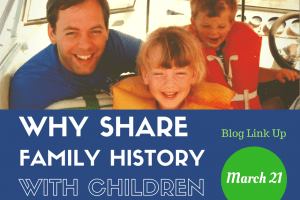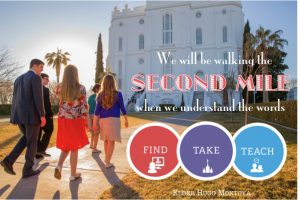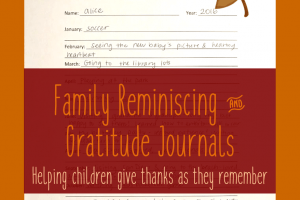Have you ever read the childhood diary of a parent or grandparent? If only I could have the pleasure of finding such a gem! Information about what our ancestors were like as children is hard to come by. Childhood journals, if written in the first place, often did not last through the decades.
 When Nan Hunter discovered one such little treasure, her family gained delightful insight into the mind of a ten-year-old boy who would become president of the Church of Jesus Christ of Latter-day Saints. She shared his diary with the world in her book, “The Diary of Howard Hunter.”
When Nan Hunter discovered one such little treasure, her family gained delightful insight into the mind of a ten-year-old boy who would become president of the Church of Jesus Christ of Latter-day Saints. She shared his diary with the world in her book, “The Diary of Howard Hunter.”
This is an affiliate link. If you click the link and make a purchase, we receive a small commission but it doesn’t change the price of the item. Thanks for your support!
Nan is the daughter-in-law of Howard W. Hunter. Howard grew up in Boise, Idaho, practiced law in California, and served in the LDS Church throughout his life. He was a general authority for over 35 years and in 1994 he was called as the 14th president and prophet of the church. He lived for 9 months after his call, the shortest tenure in church history. His teachings emphasized temple attendance and Christ-like living.
In the introduction to The Diary of Howard Hunter, Nan shares that the family assigned her to sort through the files and piles in his home. She was afraid that some treasure might be lost, so she looked at each paper, document, and book carefully. She said, “In an old file tucked in a basement closet I found his diary, written from August 5, 1918, to January 6, 1919, when he was ten years old. I had discovered a treasure. In my excitement I sat down on the basement floor and read every entry. I became captivated by what he had written. I had an instant connection to this little boy whom I had loved as a friend and father-in-law and known as a great man. I found his writing to be insightful, detailed-especially for a boy of ten-and accurate. I smiled at his spelling and loved his sense of humor.”
Nan decided to transcribe the journal and research about the historical context of each entry. The result is a beautiful book with photos of the actual journal entries, complementing newspaper articles, artifacts, and charming watercolor illustrations by Julia Hatch.
Nan wrote, “It is my hope that this boyhood journal will encourage and motivate readers of every age to record the events of their own lives.”
At the end of each chapter, Nan gives journaling prompts for children to record their perspectives on school clothing, birthday traditions, friends, and childhood games.
Nan concluded:
When we learn about each other, our hearts and lives are linked together. It is then we understand that others’ greatness is part of our own greatness, and the richness of shared family memories becomes our most cherished inheritance.

Perhaps Howard’s grandchildren felt closer to him after learning that he”played sick” to get out of school, went hooky bobbing*, got scared to death on the scenic railway (roller-coaster), and cried when a boy pulled off his pet rabbit’s tail. It’s fascinating to see how a fun, energetic, kindhearted kid grew up to be a successful, faithful, compassionate, and truly remarkable man.
His biographer wrote, “President Howard W. Hunter led a remarkable life. But while the world might honor him for his important leadership positions, he knew that true greatness lies not in the world’s definition of success. It lies, he said, in “the things God has ordained to be the common lot of all mankind, … the thousands of little deeds and tasks of service and sacrifice that constitute the giving or losing of one’s life for others and for the Lord.” Though deep-seated modesty would prevent him from ever making the comparison, President Hunter met his own definition of greatness. His greatness emerged in periods of his life far from the spotlight as he made pivotal choices to work hard, to try again after failing, and to help his fellowman. Those attributes were reflected in his remarkable ability to succeed in endeavors as diverse as music, law, business, international relations, carpentry, and, above all, being a “good and faithful servant” of the Lord.” (Eleanor Knowles, Howard W. Hunter (Salt Lake City: Deseret Book Co., 1994), p. 45, excerpts here).
This remarkable man’s childhood diary is indeed a treasure. To read a little bit more about what’s in the book, check out Howard W. Hunter: 5 Adorable Facts from His Childhood (+ Journal Entries and Photos) at LDS Living.
I interviewed Nan about the process of turning Howard’s diary into a book. I enjoyed her insightful answers and hope that you will too!
*Hooky bobbing: throwing a rope over the axle of a passing buggy or wagon and stealing a ride on your sled, pushmobile, wagon or wheels. If an older child didn’t have wheels or a sled when snow covered the roads, his feet were often used as small skis to slide along the snow-packed road. ( Quoted from The Diary of Howard Hunter, page 52.)
Interview with Nan Hunter
How did you get assigned to sort through the “files and piles” of your father-in-law when he passed? Are you the “family record keeper” or designated genealogist?
I am neither a genealogist nor a person who is good at organizing lots of paper details, but in the Hunter family I personally took it upon myself to organize the family reunions and all of our celebrations. My father-in-law and I were very close and when he moved from his lovely home on Sherwood Drive, Richard, my husband, John, his brother and John’s wife, Louine, agreed that I would be the one to clean out the house, so I did. I was happy to do it mostly because I feared they would not put any value on some of the papers such as letters, journals, small things.
As you were going through the “files and piles,” what did you keep and what did you donate or get rid of? How did you decide?
There were several iterations of going through the “files and piles” in the house. The first sweep was to call all of the children and see if they wanted any of the hundreds and hundreds of books that Dad didn’t take to his new apartment after he became the prophet. Then I called a book dealer to come and buy what he wanted and delivered the rest to the DI [Deseret Industries Thrift Store].
I assembled a huge pile of artifacts that I thought the church historian might like and before I had them come and get it I had Dad come and see if it was ok to give it to them. There were valuable things from all over the world that had been given him as he traveled, some that they wanted and some they did not. When that was all sorted out, we had all of the grandchildren come and gave them all a number and they went through the house and selected some treasures. Everyone had the joy of taking several remembrances home with them. So the family made the decision of what to keep and what to give to DI.
After he passed I had one week to remove all of the belongings out of the apartment and I made two piles. One for me and Richard and one for John and Louine. I called Louine daily and asked what she wanted and tried to be fair giving her some of the things I loved and hopefully making it an equal distribution. It worked fine. Everyone was happy.
You mentioned going to libraries and archives. Can you share a little bit more about how you researched the historical context for the book?
I made five trips to Boise, Idaho and used the archives at the University of Idaho to look up the events that he recorded. For instance, on August 15 he went “to the picture show and had a good laugh at Fatty Arbuckle.”
I would look in the paper to see where it played and any other information I could glean.
On September 8 he writes, “Dad didn’t go to work today he layed off.” I went to The Boise Statesman and looked up articles about the streetcar men to learn more about what was happening.
When he writes about having a ‘Dolly Dingle Party’ with his sister, I used the internet to educate myself about this as I did for the books he read, the pushcart he built, the signaling flags he made and every other detail in the book. I collected volumes and files full of information and used very little of it as I wrote, but I felt I needed to know as much as possible and then condense to a readable amount.
I love the recipes you included! How were the recipes passed down in Howard’s family? Did Nellie keep them in a little recipe box that was in the house among the “files and piles?”
The recipes were handed down from Nellie [Howard’s mother] to her daughter Dorothy and then to Dorothy’s daughter Kathy. As I talked to the family about the project Dorothy’s daughters were a great source of information and assistance.
How do you think keeping a journal in his early years helped Howard Hunter?
Journal keeping is much more important that stuff keeping. It is the story of your life and perhaps the most important treasure you pass on to your family. I am not certain that this ten year old journal helped Howard throughout his life, but it is an amazing historical peek of a time that we will never know again. It also revealed several things about him as a person which were carried on throughout his life. His cheerful nature, his willingness to work, his love for his sister, parents and relatives, his eye for details, and his sense of humor.
In the introduction, you said, “When we learn about each other, our hearts and lives are linked together.” In your experience, what else beyond keeping and reading journals can help us link our hearts together?
I believe it is important for families to gather, write letters (in the olden days), text, call on the phone, make arrangements to see each other when they are in the town where cousins, aunts and uncles and other distant relatives live. Dad always tried to see his relatives when he traveled the world. He would gather up information about the family and add it to his journal entries of who he saw and then would often follow up with a letter to them.
You also mentioned that as we learn about and understand ancestors, we realize that their greatness is part of our own greatness. Can you share any anecdotes from your own family about how knowing about Howard or other ancestors has helped with resilience, self-esteem, or identity?
Isn’t it fun when someone tells us you’re just like your grandmother or great aunt Susan. I love seeing in my own grandchildren the qualities and physical features of those gone before. I have a grandchild named Jake who looks exactly like Howard did as a boy. He has the same facial features, the smile, the twinkle in his eyes and his nose. I have a daughter who looks like him and some grandchildren who look and act like I did. I was always told that I was like my grandmother Julia Sullivan Greene and it gives me a great deal of joy because I loved her and feel connected to her.
When children are reminded of the greatness of their ancestors and it is pointed out to them their likeness to that person, I think it adds a little boost of confidence to them, knowing they have greatness in them, also. My husband Richard is like his father in many ways and it’s wonderful to see how he keeps his journal, thinks, takes care of his finances and has some of the same humor of his father. It’s a continuum of the life we are given.
 Nan Hunter always wanted to be an author, but for reasons unknown to her she graduated from Brigham Young University in zoology. Nan is the founder of a joyous, child–centered private school where she has inspired teachers and children since 1982. She and her husband, Richard, who have eight married children, reside in the quiet woods of Utah. Her thirty–one clever and boisterous grandchildren share her love of writing and drama. Each summer they perform an original play at the end of a week–long grandma’s camp. Her book, which she wrote for her family, revealed so much about greatness and childhood that she invites you, her friends, to share this peek into the early life of a boy who became a prophet.
Nan Hunter always wanted to be an author, but for reasons unknown to her she graduated from Brigham Young University in zoology. Nan is the founder of a joyous, child–centered private school where she has inspired teachers and children since 1982. She and her husband, Richard, who have eight married children, reside in the quiet woods of Utah. Her thirty–one clever and boisterous grandchildren share her love of writing and drama. Each summer they perform an original play at the end of a week–long grandma’s camp. Her book, which she wrote for her family, revealed so much about greatness and childhood that she invites you, her friends, to share this peek into the early life of a boy who became a prophet.














1 Comment
Leave your reply.